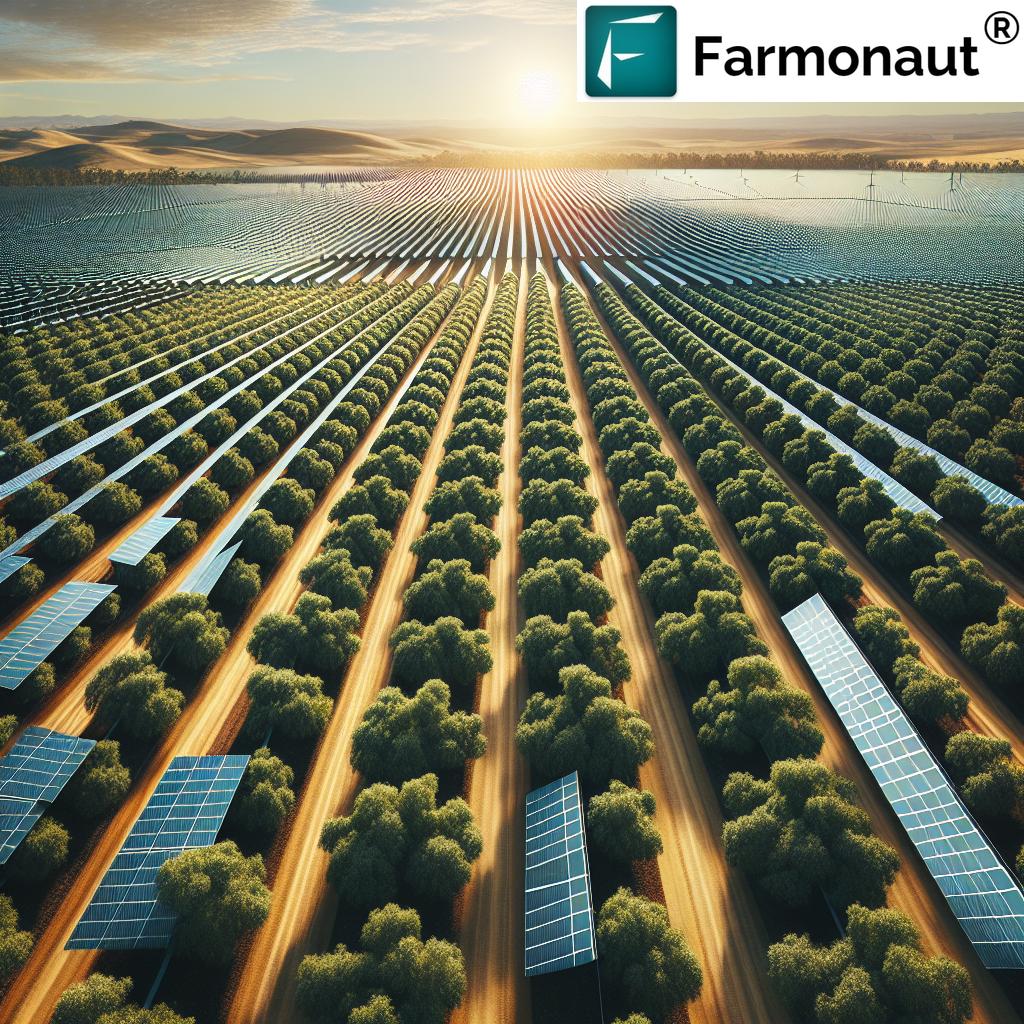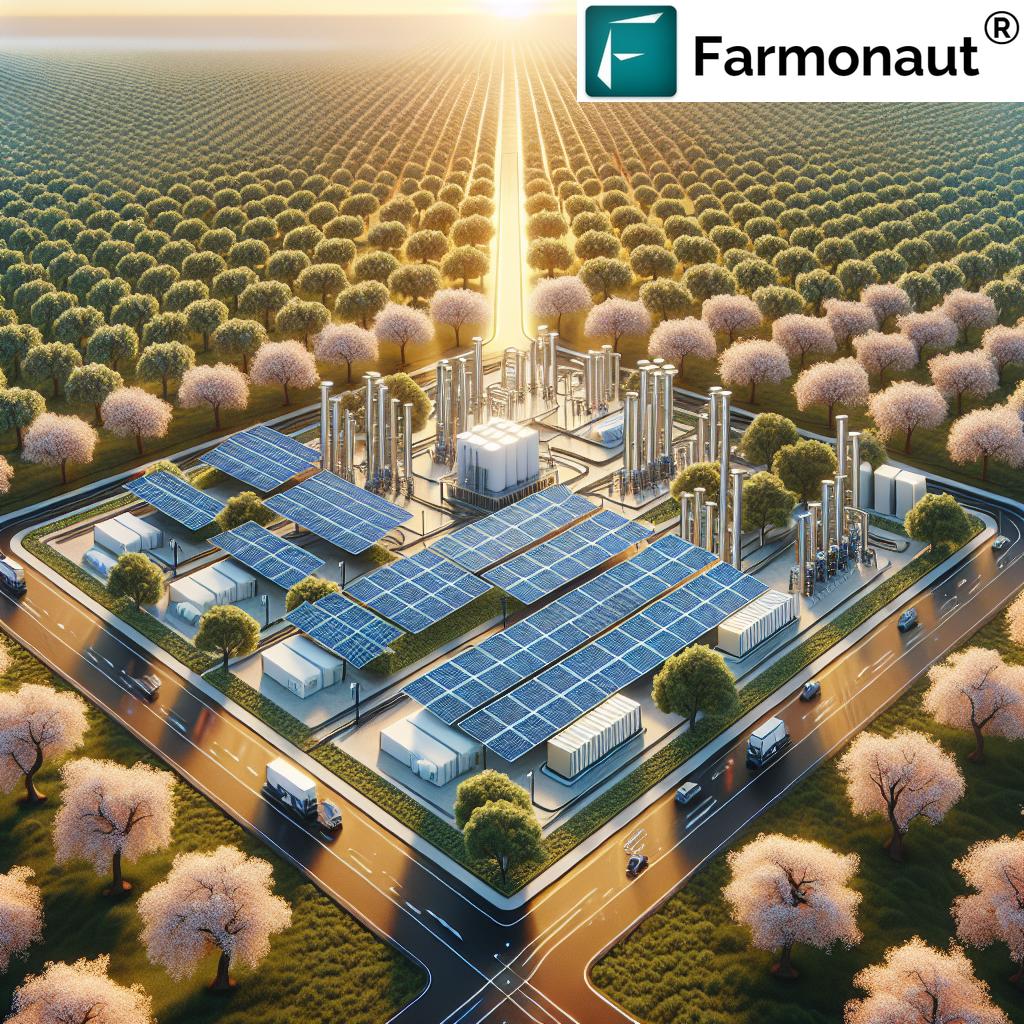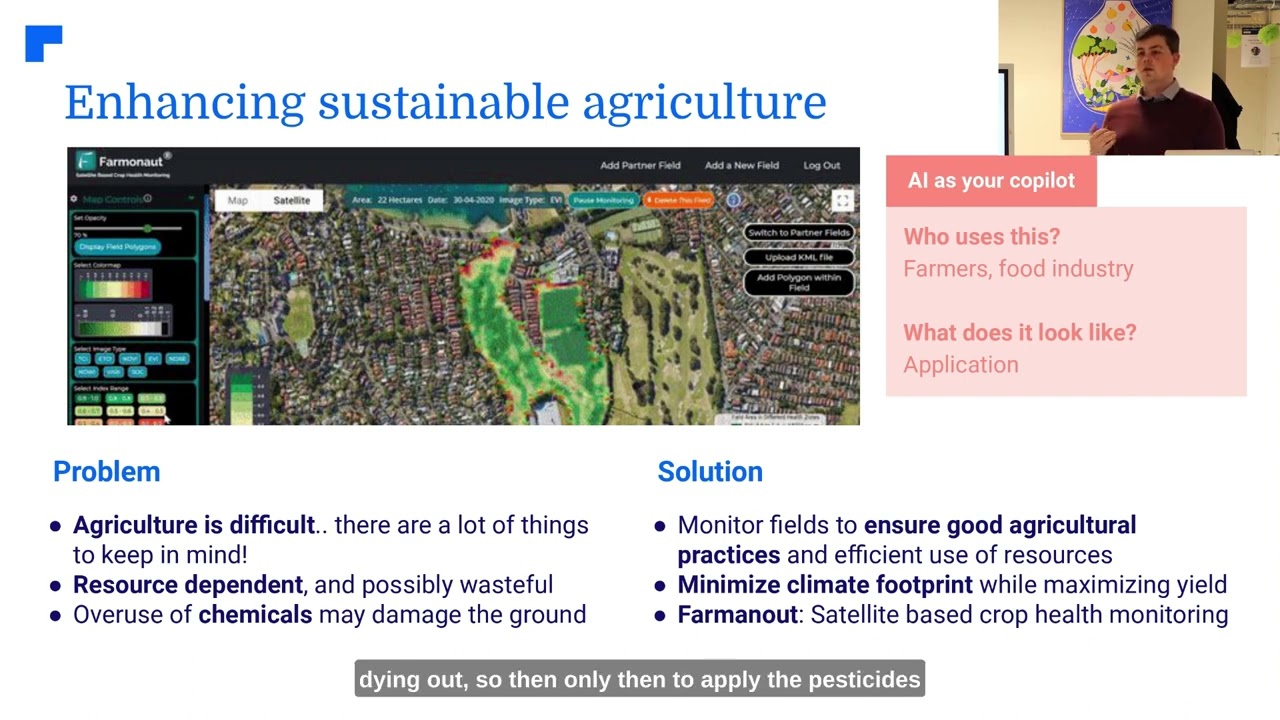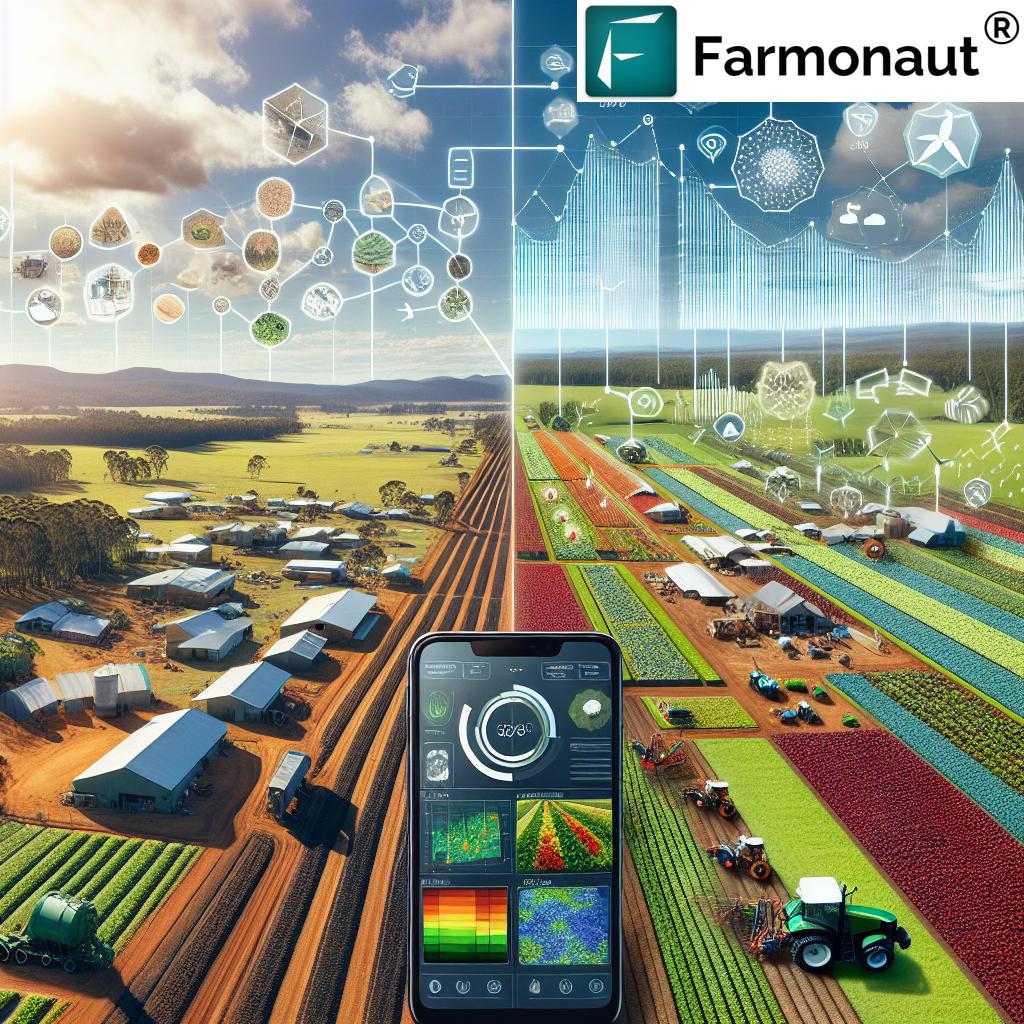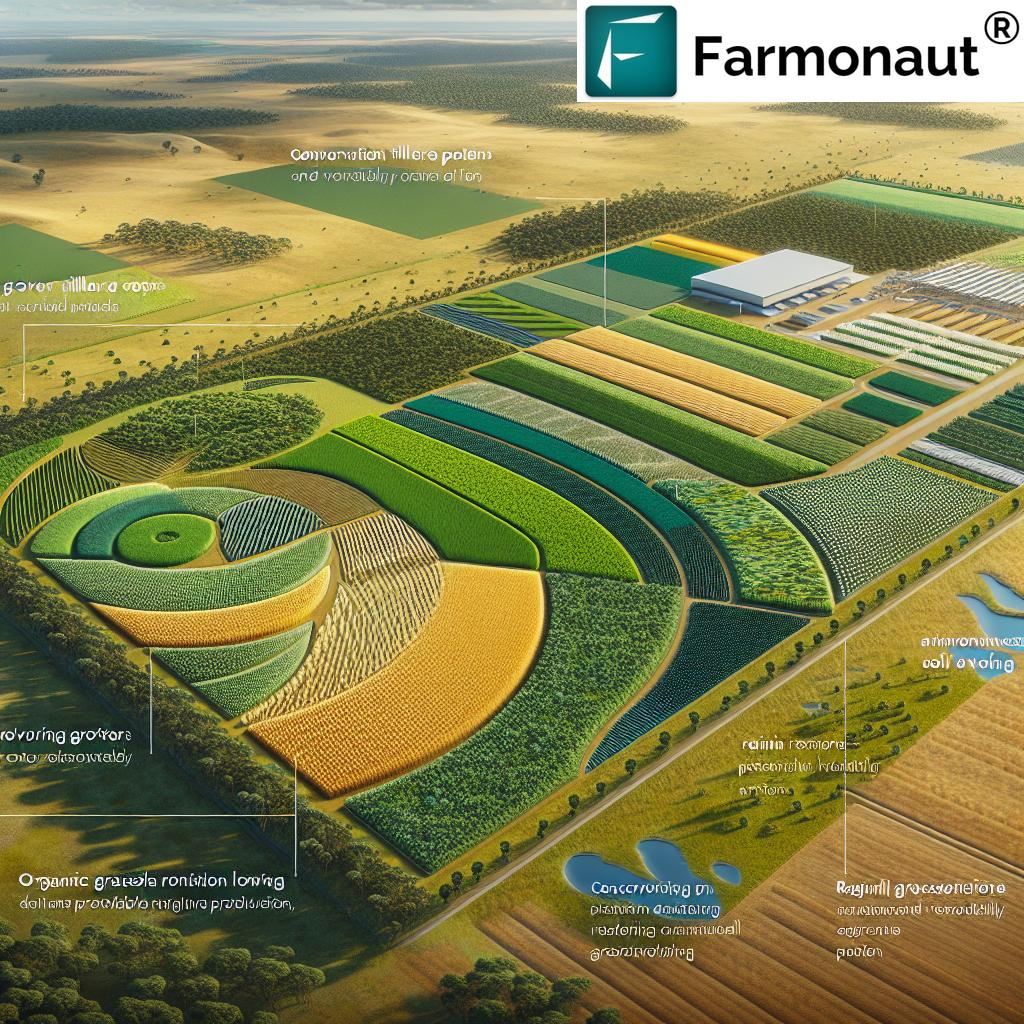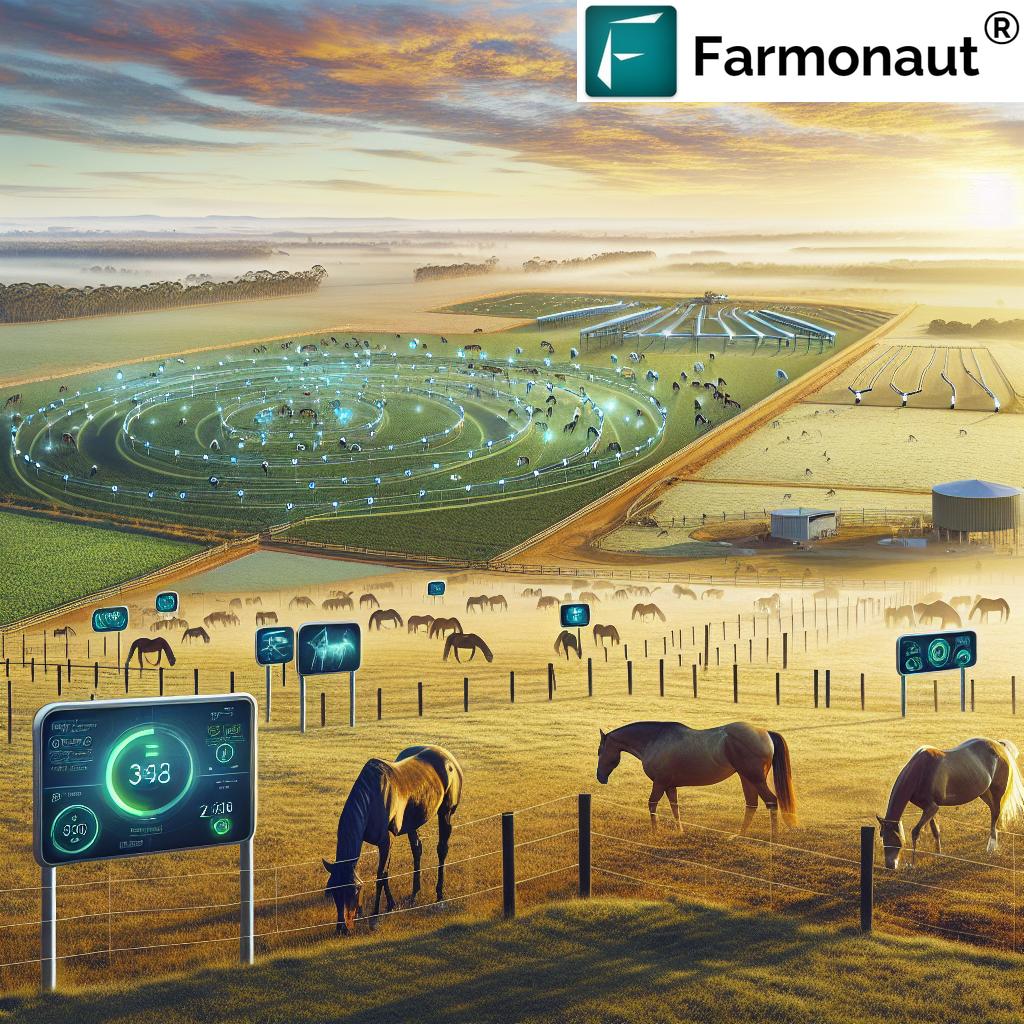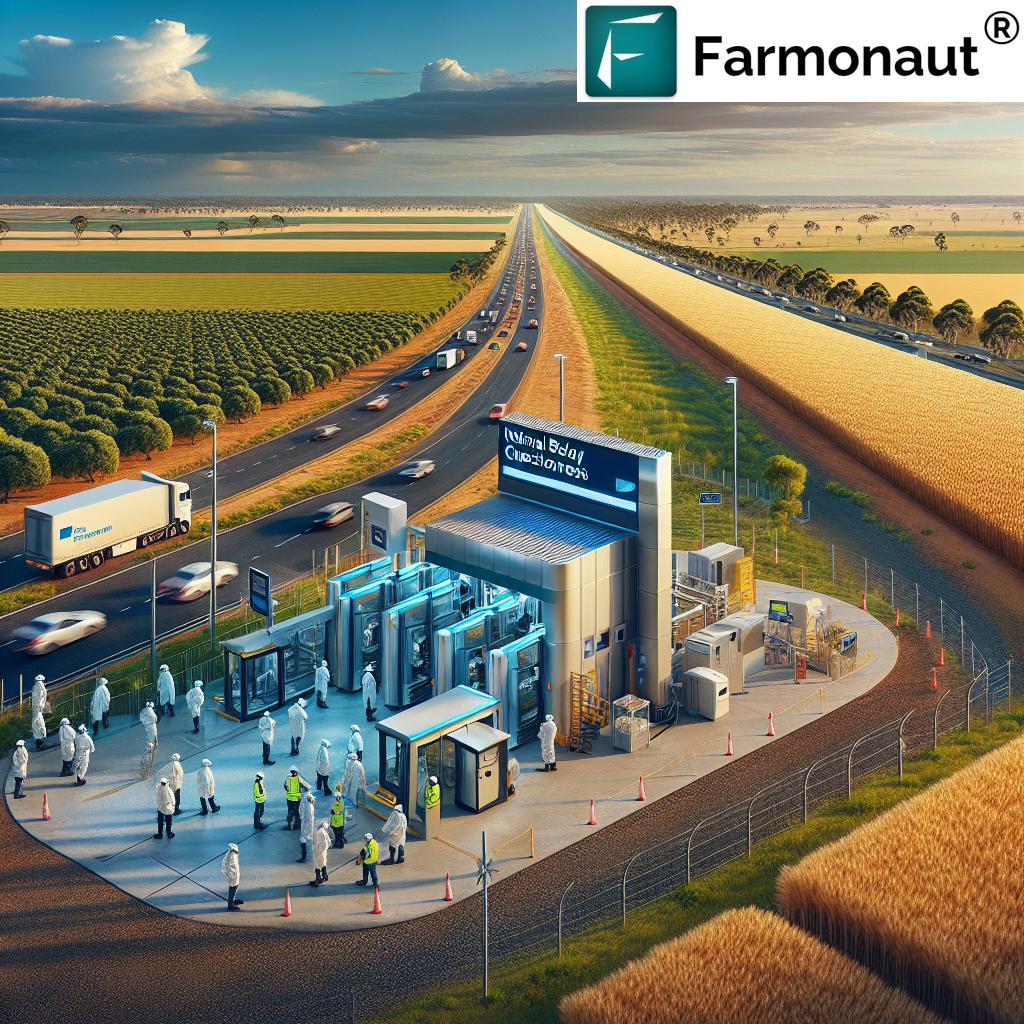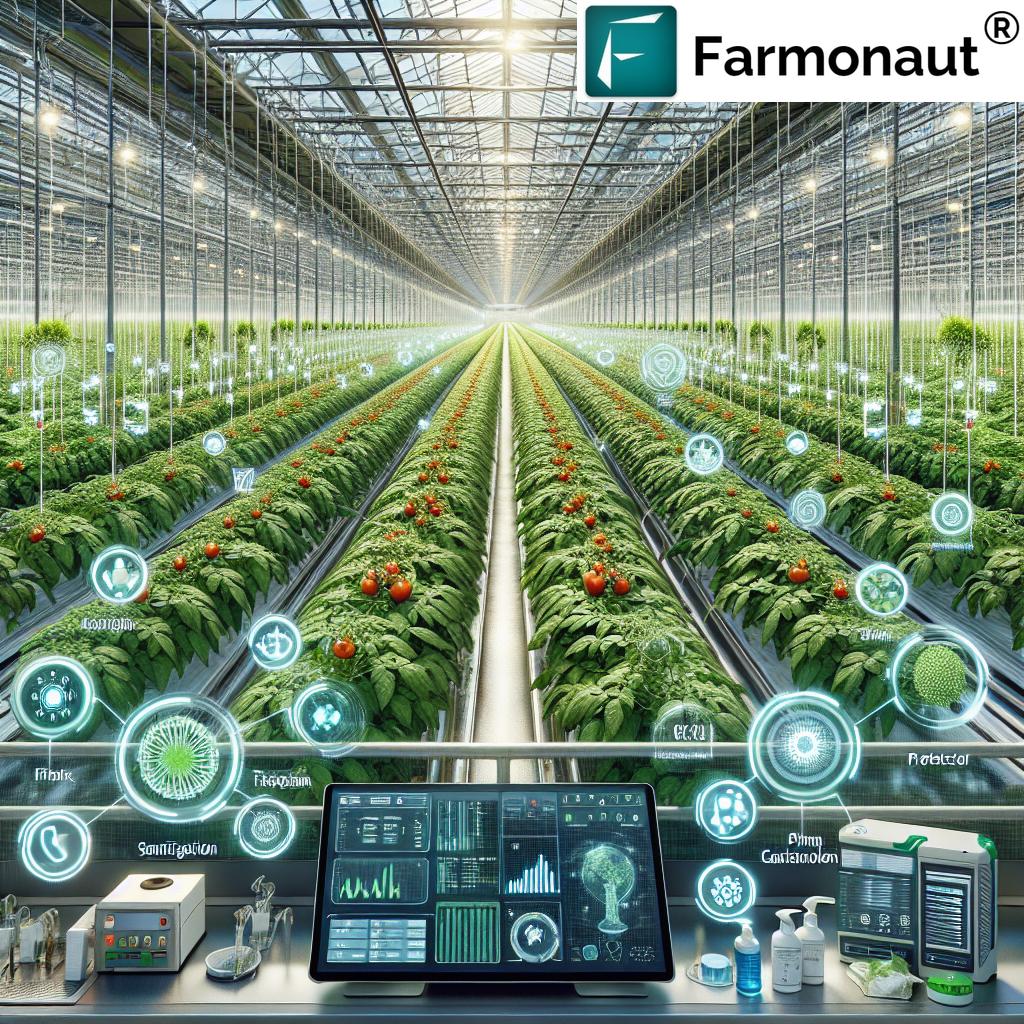Solar Energy Solutions Power 83% of Australian Almond Farm in 2025: Advancing Sustainability & Cutting Emissions
Introduction: The Power of Solar in Australian Almond Farming
As the world’s hunger for sustainable energy solutions accelerates, Australia stands at the forefront of renewable agriculture, leveraging abundant sunlight to transform traditional industries. Nowhere is this evolution more striking than in the almond sector, where smart solar energy solutions Australia are reshaping environmental footprints and boosting productivity. In 2025, the Kerarbury almond farm—a sprawling orchard near Griffith, New South Wales—charting the largest leap yet, will power 83% of its operations with clean, renewable solar energy. This transition is more than a technical upgrade. It’s a model for sustainable agriculture solar power and a catalyst for reducing greenhouse gas emissions agriculture, setting the standard for clean energy transition farming across the globe.
“In 2025, 83% of Australia’s largest almond farm will be powered by smart solar energy solutions.”
Snapshot: Solar-Powered Almond Farming in 2025
Location: Kerarbury Farm, near Griffith, New South Wales, Australia
Farm Operator: ofi (Olam Food Ingredients), world’s largest almond grower
Project Lead: Australia’s leading energy company, AGL Energy
Solar Partner: Trinasolar, using high-performance smart PV modules
Installed Capacity: 6 MW renewable energy park
Modules Installed: 10,000+ high-efficiency solar modules
Energy Storage: 2.3MW/4.5MWh state-of-the-art battery system
Annual Solar Generation: Up to 14,000 MWh—enough to power the entire adjacent community of Griffith for a year
Renewable Penetration: 83% clean energy for daily farm operations
Key Technologies:
- Smart solar PV modules designed for agricultural integration
- Advanced energy storage systems for grid stability and off-grid functionality
- Data-driven performance monitoring for optimal solar generation
Why Australian Farms Go Solar: Drivers of Change
Our agricultural sector has faced rising energy costs, water scarcity, and mounting pressure to decarbonize. For Australian almond orchards, these pressures are magnified by their remote locations, high irrigation requirements, and dependence on energy-intensive machinery.
- Sun Abundance: With over 2,800 hours of sunshine annually in Griffith and regional NSW, Australia boasts some of the world’s best solar resources.
- Cost Savings: Solar electricity, once installed, substantially reduces reliance on grid electricity and volatile diesel prices, lowering operational costs.
-
Environmental Legislative Drivers:
Recent policies urge farmers to transition to renewables and support decarbonization efforts in Australia’s food production sector. -
Sustainable Agriculture Incentives:
Growing consumer and export demand for products with lower carbon footprints has turned renewable adoption into a market and reputation advantage for the almond industry. -
Technology Advancements:
High-efficiency smart PV modules, innovative energy storage, and precision management tools have revolutionized the practicality of solar energy solutions Australia.
It’s no wonder Australia’s almond industry is at the vanguard of renewable energy park Australia initiatives, demonstrating leadership in grid-independent agricultural operations.
Kerarbury Almond Farm: Leading the Clean Energy Transition
The Kerarbury almond farm isn’t just the largest of its kind in Australia—it’s now the flagship of almond farm renewable energy transformation. Let’s explore what makes this project so significant for agriculture, energy, and the environment.
- Scale: The farm covers thousands of hectares, supporting massive almond production for both domestic and international markets.
- High Penetration Renewable System: With 83 per cent of its energy needs now met by a purpose-built 6 MW solar park and battery storage, Kerarbury drastically reduces both reliance on grid/diesel and its greenhouse footprint.
-
System Design: The installation comprises:
- 10,000+ high-power solar modules from Trinasolar
- Central inverters and smart energy controllers
- 2.3 MW / 4.5 MWh energy storage for overnight/back-up power
- Annual Output: The farm is expected to generate up to 14,000 MWh annually. To contextualize, that’s equivalent to meeting the power needs of the entire adjacent community of Griffith for one year.
- Commissioning & Approval: The system is physically complete and fully commissioned, pending final network approvals. This sets a new benchmark for the Australian almond industry and demonstrates what’s possible when sustainable energy solutions are scaled.
Solar Energy Solutions Australia: System Details & Innovations
At the heart of the Kerarbury project is a smart solar energy system meticulously designed for agricultural adaptation. This isn’t just about mounting panels on rooftops but about holistic, ground-up engineering to maximize both energy yield and farm productivity.
Key Features of the Kerarbury System
- High-Efficiency Solar Modules: Over 10,000 advanced Trinasolar PV modules capture and convert sunlight with industry-leading efficiency, reducing the physical footprint needed per megawatt.
- 6 MW Renewable Park: The solar module installation Australia is engineered for minimal shading, optimal panel orientation, and robust grid connection—critical for maximum output in high-temperature environments.
- Energy Storage: A 2.3 MW / 4.5 MWh battery back-up stores surplus solar generation for nighttime and cloudy periods, ensuring continuous operations.
- Smart Monitoring: Real-time monitoring of energy generation and performance allows for predictive maintenance and instant problem resolution—essential for large-scale agricultural applications.
- Resilience: Designed for Australia’s challenging climates, the system is both cyclone- and heat-tested, guaranteeing reliable operation over its projected 20-year service life.
- Seamless Farm Operations: Integration with irrigation, processing, cold storage, and machinery allows for uninterrupted almond production even when the broader grid is unstable.
By leveraging these innovations, Australia leads the world in sustainable agriculture solar power—proving what’s possible when farming meets twenty-first century energy engineering.
Before-and-After Sustainability Impact Table
The transformation from conventional to smart solar-powered almond farming is best captured in comparative metrics. Here’s how the Kerarbury almond farm’s estimated performance changes with the adoption of solar energy solutions:
| Metric | Before Solar Solutions (2024, estimated) | After Solar Solutions (2025, estimated) |
|---|---|---|
| Annual Energy Consumption (kWh) | 16,800,000 | 16,800,000 |
| Percentage from Renewable Sources (%) | 7% | 83% |
| Greenhouse Gas Emissions (tons CO₂ eq.) | 6,920 | 980 |
| Operational Costs (AUD) | $3,130,000 | $1,250,000 |
| Almond Yield Supported (tons) | 20,000 | 20,000+ |
Figures are conservatively estimated and illustrate a dramatic positive shift in sustainability and economic outcomes.
Energy Storage Systems for Almond Farms
One of the breakthrough aspects of the Kerarbury solar energy solutions Australia project is the deployment of a large-scale energy storage system. Here’s why this matters:
- Round-the-Clock Reliability: Almond farms require uninterrupted energy for irrigation, processing, and cold storage—especially during harvest. 2.3MW/4.5MWh batteries store solar generation for use at night or in low-light conditions.
- Disaster Resilience: In a blackout or grid interruption, essential operations can continue, protecting valuable crops and infrastructure.
- Grid Stabilization: Excess energy can be supplied to the grid during peak generation, while batteries absorb power at times of oversupply, supporting broader grid health in regional NSW.
- Diesel Displacement: Historically, farms used diesel for backup power. The new smart storage system enables almost complete transition away from diesel, slashing carbon emissions and cutting fuel costs.
Energy storage systems for farms thus form a cornerstone of grid-independent operations and are a critical enabler in sustainable energy for agribusiness.
Reducing Greenhouse Gas Emissions: Agriculture’s Big Stride
Reducing greenhouse gas emissions agriculture is a national and international priority—and solar-powered almond farming is a blueprint that’s already making an impact.
- Annual Reductions: By switching from predominantly grid-based and diesel energy to solar, the Kerarbury farm can cut emissions by over 85%—eliminating thousands of tons of CO₂ per year.
- Scaling Across the Industry: As solar penetration in Australian nut, fruit, and broadacre farming grows, sector-wide emissions could plummet.
- Local Air Quality: Less diesel and fewer fossil power peaks mean cleaner air for farm workers and local communities.
- Water for Life: Major water savings arise because electric irrigation is more energy- and resource-efficient compared to diesel-pumped alternatives.
For institutions and societies pressing for more sustainable agriculture solar power, this is a leap forward—one whose benefits will resonate for generations.
Grid-Independent Agricultural Operations: Powering the Future
With the Kerarbury installation, grid-independent agricultural operations become a practical, scalable reality. Here’s how:
- Continuous Production: Almond sorting and processing, often running 24/7 in harvest season, are now shielded from grid brownouts, ensuring a stable supply chain for food ingredients.
- Remote Farm Viability: Rural and remote almond farms, like those beyond Griffith, are freed from poor grid infrastructure and unreliable diesel supply lines.
- Community Resilience: When an entire adjacent community’s power needs can theoretically be met by one farm’s renewable output, regional resilience and emergency capacity are transformed.
This transition sets a new standard for clean, affordable, and reliable energy across all sectors of Australian agriculture.
Farmonaut: Unleashing Smart Satellite-Based Precision Agriculture
While solar and storage deliver energy, advanced technology is essential for modern farm management. At Farmonaut, we offer innovative, affordable, and scalable tools that empower Australian almond growers—and worldwide farmers—to thrive in a sustainable, data-driven future.
What Makes Farmonaut Unique?
- Satellite-Based Crop Health Monitoring: We use global multispectral satellite imagery to give real-time insights into crop health (e.g., NDVI), soil moisture, and stress. Farmers gain actionable data for water, fertilizer, and pest decisions—boosting yield and efficiency and reducing waste.
- AI-Powered Advisory: Jeevn AI analyzes weather, remote sensing, and farm history to deliver crop-specific recommendations and improve outcomes.
- Blockchain-Based Traceability: Our solutions offer end-to-end tracing for almond supply chains, enhancing customer trust and market value. Learn how traceability can boost your Australian almond exports.
- Fleet & Resource Management: With dedicated apps, we enable day-to-day vehicle and fleet management for large-scale agricultural operations—optimizing transport, fuel, and safety.
- Carbon Footprinting: Measure, monitor, and benchmark your almond farm’s carbon emissions in real time—vital for audits, eco-labeling, and sustainability marketing.
- Crop Loan & Insurance: We support quick, risk-verified crop loan assessments with satellite-verified loan and insurance solutions.
- Large-Scale Farm Management: Multi-farm, multi-region plantation or orchard? Our Agro-Admin App is purpose-built for managers of extensive operations.
Best of all, Farmonaut operates via iOS, Android, and Web, making world-class agri-tech accessible to every scale of farm in Australia and beyond.
Integrate Farmonaut into Your Operations
- Developers: Farmonaut API enables integration of farm satellite/environmental data into your in-house applications.
- Docs & Resources: API Developer Documentation.
Watch & Learn: Video Insights
“Solar energy adoption at this almond farm significantly cuts greenhouse gas emissions, advancing sustainable agriculture in Australia.”
Renewable Energy Park Australia: Solar Farming Beyond Almonds
The Kerarbury project is part of a rapidly growing movement transforming vineyards, citrus plantations, olive groves, and broadacre grain farms across regional Australia. The renewable energy park Australia model serves not only the almond sector but sets universal benchmarks for decarbonization and productivity:
- Multi-Industry Scalability: Solar and energy storage systems tailored for tree nuts can be adapted to vineyards, vegetable operations, and grain growing. All benefit from sustainable, localized power.
- Partnership-Driven System Management: For long-term farm owners and producers, system installation, management, and maintenance can be handled by dedicated energy companies, allowing growers to focus on production.
- Smart PV Modules: Advances in photovoltaic module technology mean more megawatt capacity per hectare, benefitting a range of rural industries growing food, fibre, and bio-based materials.
- Regional Impact: Collectively, these parks make a transformative contribution to the decarbonization efforts and clean energy transition farming of entire regions.
Sustainable Energy for Agribusiness: Key Benefits
From the almond industry to dairy, viticulture, and grains, sustainable energy for agribusiness delivers quantifiable advances:
- Operational Security: Immunity from power price shocks or diesel outages. Budgeting becomes more predictable.
- Marketing Leverage: “Green almonds” or low-carbon produce enjoys surging demand among environmentally conscious consumers and major international markets.
-
Compliance Ready: Demonstrating carbon footprinting and emissions reductions is critical as new regulations and certifications arise.
Explore carbon monitoring solutions. - Ecosystem Benefits: Solar parks can support habitat corridors, pollinator-friendly plantings, or co-grazing, promoting broader biodiversity without compromising yield.
- Community Engagement: Local grids stabilized by renewable inputs benefit not only farms, but also schools, clinics, and rural enterprises.
With each new solar module installation Australia, a new chapter is written for sustainable agriculture solar power.
Affordable Precision Agriculture: Farmonaut Subscription
For those ready to leap into the world of precision, data-driven agriculture, Farmonaut offers flexible, subscription-based access to all our advanced monitoring and advisory tools.
Whether running a single orchard or managing region-wide operations, Farmonaut brings affordable precision farming and sustainability to your fingertips.
FAQ: Solar Energy and Sustainable Almond Farming in Australia
How much of the Kerarbury almond farm’s energy comes from renewables?
In 2025, approximately 83% of the Kerarbury almond farm’s energy will be generated from a smart 6MW solar power system with advanced energy storage, representing one of the highest renewable penetration rates in Australian agriculture.
How does solar help Australian almond growers reduce costs?
By generating the majority of power on-site, growers significantly reduce costs spent on grid electricity and diesel, creating predictable long-term energy budgets and supporting efficient almond yield year over year.
What are energy storage systems for farms, and why are they important?
Energy storage systems (e.g., large-scale batteries) store surplus solar power, allowing almond farms to run machinery, irrigation, and processing equipment at night or during low-sunlight periods—without grid or diesel backup.
Can solar-powered agriculture really reduce greenhouse gas emissions?
Yes. Transitioning from fossil-based power to solar can slash emissions by up to 85% or more, drastically lightening the carbon footprint of almond and other food production.
What innovative technologies does Farmonaut provide to support sustainable farming?
Farmonaut delivers satellite-based crop monitoring, AI-powered advisory, blockchain traceability, fleet and resource management, and carbon footprint tracking. Our cloud-based and app platforms serve any farm size with affordable, actionable intelligence.
How can I adopt Farmonaut’s solutions for my orchard?
Start today with our Web App or download on Android and iOS. Enterprise solutions are available for large-scale and multi-region operations.
Conclusion: Empowering Australia’s Nut Growing Future
In 2025, as Australia’s almond industry powers ahead on its clean energy transition farming journey, the transformative impact of smart solar and storage systems is clear. The Kerarbury almond farm, by achieving 83% renewable penetration, has set a global standard in sustainable agriculture solar power—showing how environmental stewardship, economic logic, and modern agri-tech go hand-in-hand.
By harnessing solar energy solutions Australia, integrating energy storage systems, and embracing precision agriculture technology from Farmonaut, our farmers—regardless of scale—are empowered to drive productivity and sustainability, ensure food security, and reduce impact on our shared planet.
Ready to join the revolution? Experience Farmonaut, or learn how your business can thrive with advanced, accessible solutions aligned with the future of farming.


